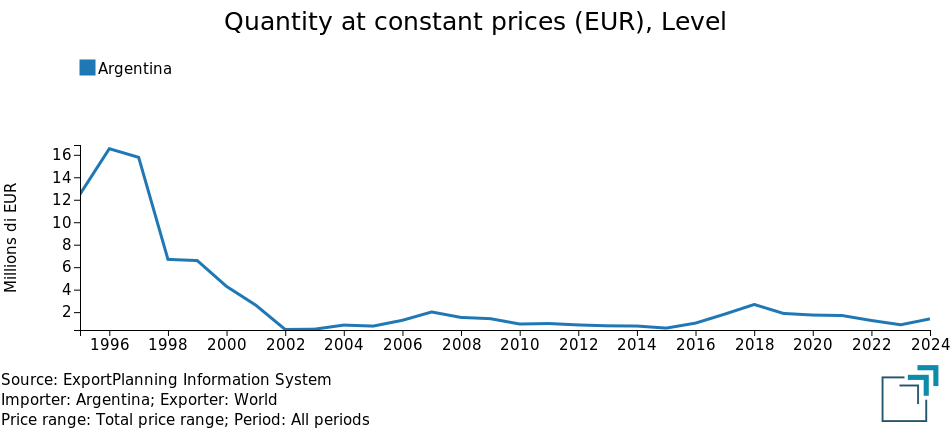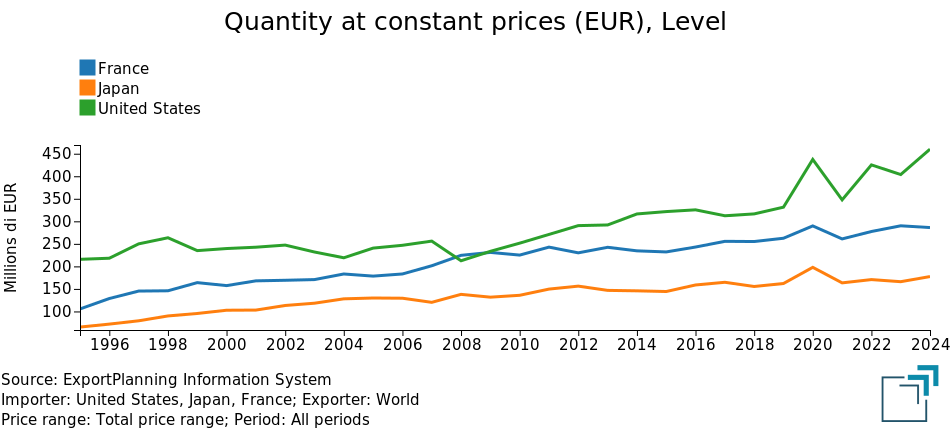Market selection: the new "Import Development Stage" indicator to discover the most promising export markets
Analyzing the stage of import development to identify the most attractive markets, with a product-specific approach
Published by Silvia Brianese. .
Development stage of Imports Bestpractice Export Internationalisation Importexport Planning Uncertainty Marketselection Foreign markets International marketingThe current context of economic and geopolitical instability continues to create uncertainty about the future of international trade relations, posing an increasingly significant challenge for exporting companies. In this scenario, it becomes crucial for Italian companies to adopt geographical diversification strategies for export destinations as an alternative to markets characterized by a high commercial risk profile.
To better support this decision-making process, ExportPlanning has developed a new indicator capable of evaluating the import development stage of a specific product in a given country.
The indicator is available within the Market Selection tool on the ExportPlanning platform, and is accessible at product level for over 3,000 products in the ExportPlanning classification.
The structure of the indicator: how to identify high-potential export markets?
Theoretically, the indicator is based on the product life cycle model and uses machine learning techniques applied to international trade data. Specifically, through cluster analysis, it was possible to classify countries into three groups, each corresponding to a stage in the import development of a given product:
- Latent: countries with a very low import-to-GDP ratio and near-zero import growth rates1;
- Growth: countries with a relatively low import-to-GDP ratio, but with very high import growth rates;
- Saturation: countries with a very high import-to-GDP ratio, accompanied by low import growth rates.
There is also a fourth category, called “Other”, which includes markets that, for a given product, do not have sufficiently clear characteristics to be reliably classified into one of the three previous stages. Finally, where import or GDP data are insufficient, the market is labeled as “Not classified”.
Each stage is assigned a score (on a scale from 0 to 100), which gives higher weight to markets in the Growth phase. These markets are generally characterized by the emergence of new suppliers, the presence of adequate logistics and distribution infrastructure, and imitation effects in consumer behavior that contribute to the increase in demand for foreign products. These factors make such countries particularly attractive for exporters, especially in a global context marked by uncertainty and increasing demand selectivity.
A case example: which countries are emerging importers of Durum Wheat Pasta?
Taking the product “Durum Wheat Pasta” as an example, Argentina stands out among the countries in the Latent stage of the import development cycle for this product.
Durum Wheat Pasta: Argentina's imports

The main countries in a structural Growth phase of durum wheat pasta imports are Kazakhstan and South Africa.
Durum Wheat Pasta: imports of Kazakhstan and South Africa

Finally, United States of America, Japan, and France are in the Saturation stage of the durum wheat pasta import life cycle.
Durum Wheat Pasta: imports of United States of America, Japan, and France

Conclusions
The Import Development Stage indicator is a strategic tool for companies aiming to expand or redirect their export destinations. Its main value lies in the ability to identify markets where imports of specific goods are in a structural growth phase, signaling favorable contexts for the entry of new players.
For deeper insights into the methodology used to build the indicator and to explore additional examples related to major consumer and capital goods sectors, you can download the Ebook "Global Uncertainty: What New Trade Opportunities?" from the Ebook section of the ExportPlanning platform, after registering on the portal.
To ensure continuous accuracy, the indicator will be regularly updated in line with the periodic updates of the ExportPlanning foreign trade databases.
1) The reference variables are:
- import share at constant prices compared to 2010 GDP
- annual import growth rate net of GDP growth, assessed over 3 and 10 years


